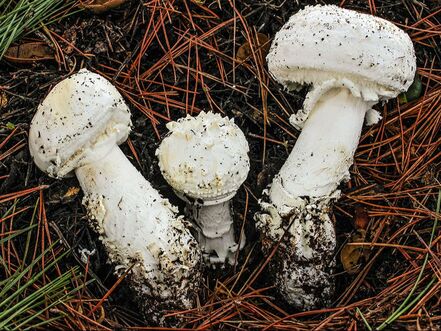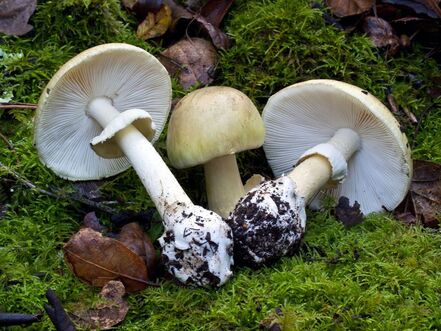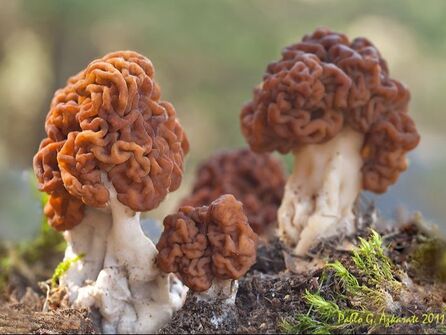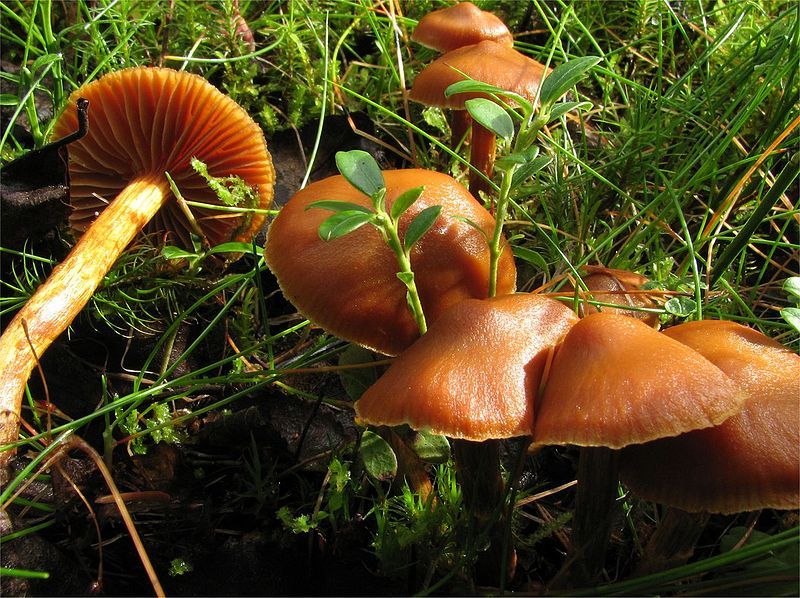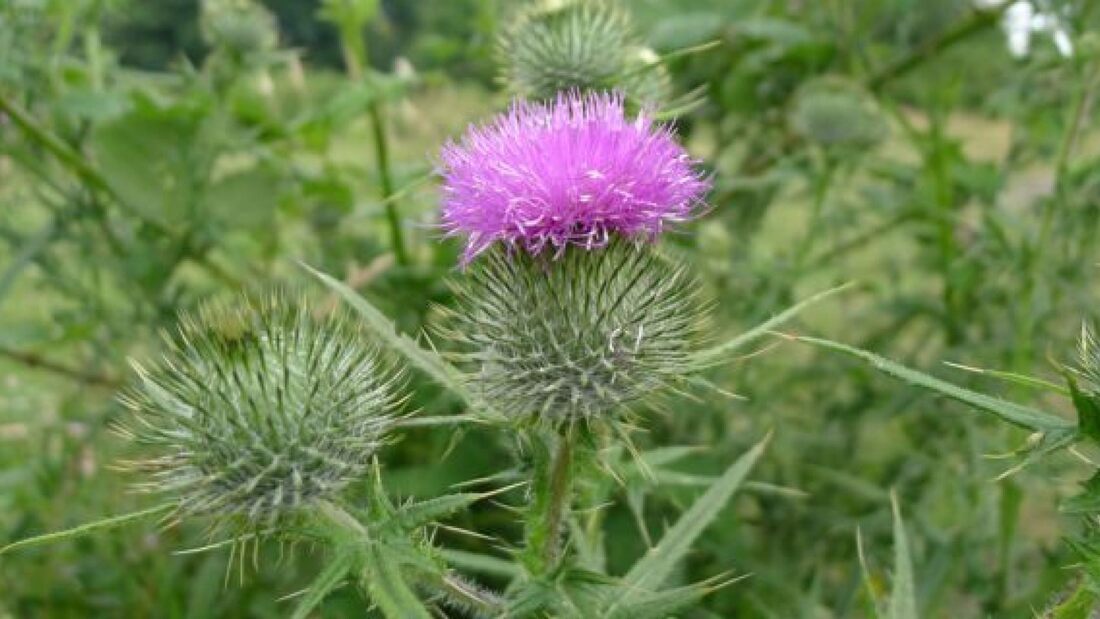Mushroom Poisoning facts
Oftentimes when someone has ingested a poisonous mushroom, it is almost impossible to identify the species because the person does not remember or have a sample of the mushroom with them. However, if you can't identify the mushroom, there are still ways to help in somewhat narrowing down what a person ate due to the symptoms they are presenting. Although symptoms vary greatly depending upon what type of poisonous mushroom was eaten, one thing is for sure is that ALL poisonous mushrooms cause vomiting and stomach pain. There are also two general rules of thumb. Mushrooms that cause early symptoms within two hours of eating are less dangerous then those which cause symptoms after six hours of eating.
Below you will find a complete diagnosis for those mushrooms which are regarded as early symptomatic as well as the information you need to know to be more prepared in dealing with mushrooms.
Below you will find a complete diagnosis for those mushrooms which are regarded as early symptomatic as well as the information you need to know to be more prepared in dealing with mushrooms.
Due to the fact that most individuals who have become poisoned and the lack of mushroom experts available to identify what mushroom a person may have ingested, medical doctors found it easier to categorize the severity based upon the symptoms. By doing this, they lessoned the need of identifying the mushroom type based upon its genes. In all cases, if one where to digest activated charcoal, it will to some degree be useful in limiting absorption. Sadly, many antidotal therapies have been used and tried but none have shown any positive results according to mainstream medical research.
Steps For Making Activated Charcoal:
1) Burn hardwood until is nice and going then cover it in order to minimize the air intake which will eventually burn to the point the wood is burning but does not completely destroy the wood leaving charcoal behind.
2) Break any large chunks of the charcoal into smaller pieces and put in a 5 gallon bucket.
3) Make a solution of 25 percent Calcium Chloride or Zinc Chloride and 75 percent clean fresh water. Pour this mixture into your 5 gallon bucket and stir thoroughly. Put the lid on your bucket and let sit for 20-24 hours.
4) Remove the charcoal from the bucket and put it on a draining tray. Allow the charcoal to drain for 1 hour. For removal of any traces of chemicals from the charcoal, you can wash and rinse repeatedly with clean fresh water. After washing keep the charcoal in the draining tray for draining. After this is complete then put your charcoal in a large pan and put it in the oven. Set your oven to 215-230 degrees Fahrenheit and bake for about 3 hours.
5) After baking remove the now Activated Charcoal from the oven and crush it into a fine powder. For future use store the activated charcoal in a zip lock bags or airtight container.
1) Burn hardwood until is nice and going then cover it in order to minimize the air intake which will eventually burn to the point the wood is burning but does not completely destroy the wood leaving charcoal behind.
2) Break any large chunks of the charcoal into smaller pieces and put in a 5 gallon bucket.
3) Make a solution of 25 percent Calcium Chloride or Zinc Chloride and 75 percent clean fresh water. Pour this mixture into your 5 gallon bucket and stir thoroughly. Put the lid on your bucket and let sit for 20-24 hours.
4) Remove the charcoal from the bucket and put it on a draining tray. Allow the charcoal to drain for 1 hour. For removal of any traces of chemicals from the charcoal, you can wash and rinse repeatedly with clean fresh water. After washing keep the charcoal in the draining tray for draining. After this is complete then put your charcoal in a large pan and put it in the oven. Set your oven to 215-230 degrees Fahrenheit and bake for about 3 hours.
5) After baking remove the now Activated Charcoal from the oven and crush it into a fine powder. For future use store the activated charcoal in a zip lock bags or airtight container.
Early Stomach symptoms: Inflammation of the stomach and intestines. Symptoms include stomach discomfort, loss of appetite, nausea, vomiting, and some diarrhea and can occasionally be bloody.. Also sometimes headaches or diffuse muscle pain. And symptoms usually go away within 24 hours.
Early Neurological symptoms: Hallucinogenic mushrooms show symptoms within 15 to 30 min and include exaggerated and unreal sense of well-being, enhanced imagination, hallucinations. abnormal rapid heat rate, high blood pressure, and extreme body temperature can occur in some children but serious consequences are not so common. Treatment usually requires sedation with benzodiazepines (a class of psychoactive drugs).
Early Muscarinic symptoms: There are two main genus of mushrooms which are found to be early symptomatic are from the Inocybe Genus and the Clitocube Genus:
Early Neurological symptoms: Hallucinogenic mushrooms show symptoms within 15 to 30 min and include exaggerated and unreal sense of well-being, enhanced imagination, hallucinations. abnormal rapid heat rate, high blood pressure, and extreme body temperature can occur in some children but serious consequences are not so common. Treatment usually requires sedation with benzodiazepines (a class of psychoactive drugs).
Early Muscarinic symptoms: There are two main genus of mushrooms which are found to be early symptomatic are from the Inocybe Genus and the Clitocube Genus:
|
Clitocybe Genus
Common Name: Anise-scented Latin Name: Clitocybe odora National Audubon Mushroom Pg. 350-750 Common Name: Cloudy Latin Name: Clitocybe nebularis National Audubon Mushroom Pg. 267-749 Common Name: Crowded White Latin Name: Clitocybe dilatata National Audubon Mushroom Pg. 238-746 Common Name: Fat-footed Latin Name: Clitocybe clavipes National Audubon Mushroom Pg. 320-745 Common Name: Fragrant Latin Name: Clitocybe suaveolens National Audubon Mushroom Pg. 237-751 Common Name: Funnel Latin Name: Clitocybe gibba National Audubon Mushroom Pg. 263-747 Common Name: Giant Latin Name: Clitocybe gigantea National Audubon Mushroom Pg. 264-748 Common Name: Smoky-brown Latin Name: Clitocybe avellaneialba National Audubon Mushroom Pg. 279-744 Common Name: Wood Latin Name: Clitocybe ectypoides National Audubon Mushroom Pg. 262-747 Common Name: Sweating Mushroom Latin Name: Clitocybe dealbata National Audubon Mushroom Pg. 241-745 Common Name: Blewit Latin Name: Clitocybe nuda National Audubon Mushroom Pg. 346-749 |
Inocybe Genus
Common Name: White-disc Fiber Head Latin Name: Inocybe albodisca National Audubon Mushroom Pg. 15-626 Common Name: Ceasar's Fiber Head Latin Name: Inocybe causariata National Audubon Mushroom Pg. 314-627 Common Name: Green-foot Fiber Head Latin Name: Inocybe calamistrata National Audubon Mushroom Pg. 269-627 Common Name: Straw-colored Fiber Head Latin Name: Inocybe fastigiata National Audubon Mushroom Pg. 318-628 Common Name: Straw-colored Fiber Head (Darker Brownish Cap) Latin Name: Inocybe fastigiella National Audubon Mushroom Pg. 318-628 Common Name: Black-nipple Fiber Head Latin Name: Inocybe fuscodisca National Audubon Mushroom Pg. 316-629 Common Name: White Fiber Head Latin Name: Inocybe geophylla National Audubon Mushroom Pg. 16-629 Common Name: Lilac Fiber Head Latin Name: Inocybe lilacina National Audubon Mushroom Pg. 13-631 Common Name: Green-foot Fiber Head (Brown tints in cap, fresh bruising and some what red) Latin Name: Inocybe hirsuta National Audubon Mushroom Pg. 628 Common Name: Torn Fiber Head Latin Name: Inocybe lacera National Audubon Mushroom Pg. 315-630 Common Name: Woolly Fiber Head Latin Name: Inocybe lanuginosa National Audubon Mushroom Pg. 271-630 |
Common Name: Blushing Fiber Head Latin Name: Inocybe pudica National Audubon Mushroom Pg. 14-632 Common Name: Pungent Fiber Head Latin Name: Inocybe sororia National Audubon Mushroom Pg. 317-632 Common Name: Scaly Fiber Head Latin Name: Inocybe terrigena National Audubon Mushroom Pg. 183-633 Common Name: Unknown Latin Name: Inocybe umbratica National Audubon Mushroom Pg. 626- Common Name: Unknown Latin Name: Inocybe violacea National Audubon Mushroom Pg. 632- |
Symptoms may include massive discharge of the parasympathetic nervous system also known as salivation, tears forming, urination, defecation. Stomach cramps and vomiting as well as pupil constriction, excessive discharge of watery mucus from the lungs, which results in a productive cough, abnormally slow heart rate, sweating, wheezing, and spontaneous contraction of muscle under the skin. Such symptoms are found to exist typically mild and begin to appear within 30 min and will stop within 12 hours.
Delayed Stomach Symptoms: The family of mushrooms which give delayed symptoms are those of the genuses Amanita , Gyromitra and Cortinarius (which are listed below). The most toxic mushroom is the Amanita phalloides which causes 95% of mushroom poisoning deaths. Initially inflammation of the stomach and intestines, which can take up to 6 to 12 hours after eating to manifest. after ingestion which can be severe; low blood sugar is also possible. Initial symptoms are less intense for a few days; then liver failure and sometimes kidney issues occur as well. And it can get worse to the point one needs a liver transplant.
Delayed Stomach Symptoms: The family of mushrooms which give delayed symptoms are those of the genuses Amanita , Gyromitra and Cortinarius (which are listed below). The most toxic mushroom is the Amanita phalloides which causes 95% of mushroom poisoning deaths. Initially inflammation of the stomach and intestines, which can take up to 6 to 12 hours after eating to manifest. after ingestion which can be severe; low blood sugar is also possible. Initial symptoms are less intense for a few days; then liver failure and sometimes kidney issues occur as well. And it can get worse to the point one needs a liver transplant.
|
Amanita Genus
Common Name: Cleft-foot Latin Name: Amanita brunnescens National Audubon Mushroom Pg. 126-572 Common Name: Booted Latin Name: Amanita cothurnata National Audubon Mushroom Pg. 127-532 Common Name: Gemmed Amanita Latin Name: Amanita gemmata National Audubon Mushroom Pg. 128-537 Common Name: Fly Agaric Latin Name: Amanita muscaria National Audubon Mushroom Pg. 143-539 |
Common Name: Yellow-orange Fly Agaric Latin Name: Amanita formosa/muscaria National Audubon Mushroom Pg. 137-540 Common Name: Panther Latin Name: Amanita pantherina National Audubon Mushroom Pg. 130-541 Common Name: Death Cap Latin Name: Amanita phalloides National Audubon Mushroom Pg. 113-543 Common Name: Gray-veil Amanita Latin Name: Amanita porphyria National Audubon Mushroom Pg. 149-544 Common Name: Destroying Angel Latin Name: Amanita virosa National Audubon Mushroom Pg. 123-551 |
Gyromita Genus
Common Name: Saddle-shape False Morel Latin Name: Gyromitra infula National Audubon Mushroom Pg. 719-339 Common Name: Gabled False Morel Latin Name: Gyromitra brunnea National Audubon Mushroom Pg. 716-335 Common Name: Conifer False Morel Latin Name: Gyromitra esculenta & caroliniana National Audubon Mushroom Pg. 714-336 Cortinarius Genus Common Name: Deadly Cort Latin Name: Cortinarius gentilis National Audubon Mushroom Pg. 298-615 |
|
Amanita Smithiana: Causes delayed inflammation of the stomach and intestines which can take up to 6 to 12 hours after eating, and severe kidney issues usually occur within a week or two which typically require dialysis.
|
Amanita Phalloides: Severe inflammation of the stomach and intestines, which can take up to 6 to 12 hours after eating to manifest. Low blood sugar is also possible. Initial symptoms are less intense for a few days and then liver failure and sometimes kidney issues occur as well. which can get worse to the point of needing a liver transplant.
|
|
Gyromitra Esculenta: Can cause low blood sugar right after inflammation of the stomach and intestines occurs or shortly after it. while other symptoms can be seizures, and after a few days progressive kidney failure with severe liver damage.
|
Cortinarius: Inflammation of the stomach and intestines may last for 3 days. kidney failure, pain between the ribs and the upper border of the ilium, decreased urination, which may occur 3 to 20 days after eating. The good thing is in this case kidney failure resolves itself on its own most of the time.
|
Milk Thistle and Mushroom Poisoning:
In an article labeled Milk Thistle and Mushroom Poisoning written by David J Kroll back in Oct 28, 2011. He wrote, "Although, Amanita phalloides is perhaps the most deadly mushroom the primary toxin of the mushroom, α-amanitin. This potency of this toxin comes from its remarkably high affinity for RNA polymerase II, the primary RNA polymerase for making messages that are converted into proteins. An intravenous preparation of milk thistle extract has been available in Europe for over 20 years: Legalon SIL. This GMP-manufactured product is common to emergency rooms in Germany, France, and Belgium for the treatment of mushroom poisoning. The preparation is comprised of silybin A and silybin B – known collectively as silibinin – as a hemisuccinate that both improves the solubility and bio-availability of the compounds.
Two cases in the US – one in 2007 and another just this past month – have seen emergency IND approval of this European product. In 2007, Legalon was used to save four of five family members who had ingested Amanita phalloides while on a New Year’s Day picnic outside of Santa Cruz, California. And also some time after that, a team led by Dr. Jacqueline Laurin at Georgetown Medical Center successfully treated two men for accidental ingestion of Amanita. Georgetown is now an approved referral center for this IV prep of Legalon and their efforts were greatly assisted by the Santa Cruz team who handled the 2007 cases."
So although the Amanita Mushroom indeed can really plague ones day there is however hope and that we can thank God for his creating the beautiful wild plant known as the Milk Thistle which can be used to say ones life.
Two cases in the US – one in 2007 and another just this past month – have seen emergency IND approval of this European product. In 2007, Legalon was used to save four of five family members who had ingested Amanita phalloides while on a New Year’s Day picnic outside of Santa Cruz, California. And also some time after that, a team led by Dr. Jacqueline Laurin at Georgetown Medical Center successfully treated two men for accidental ingestion of Amanita. Georgetown is now an approved referral center for this IV prep of Legalon and their efforts were greatly assisted by the Santa Cruz team who handled the 2007 cases."
So although the Amanita Mushroom indeed can really plague ones day there is however hope and that we can thank God for his creating the beautiful wild plant known as the Milk Thistle which can be used to say ones life.
